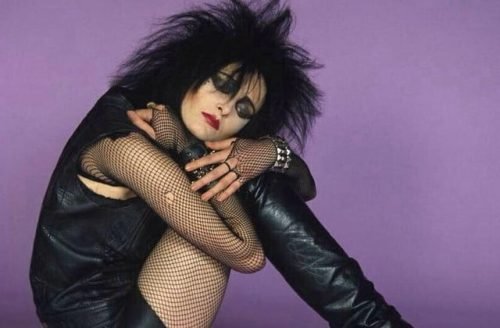Siouxsie Sioux, the enigmatic frontwoman of Siouxsie and the Banshees, redefined femininity in the music world by rejecting the conventional norms that dictated how women should look, act, and perform on stage. Embracing a bold fusion of punk and gothic aesthetics, she carved out a unique space where androgyny and raw power became central to her persona.
Siouxsie’s defiance of traditional gender roles and her unapologetic self-expression not only revolutionized the visual and sonic landscape of her time but also paved the way for future generations of artists to explore and assert their identities more freely. Her approach was significant as it challenged the status quo, offering a new paradigm of female empowerment in an industry often dominated by male-defined standards.
Early Life and Influences
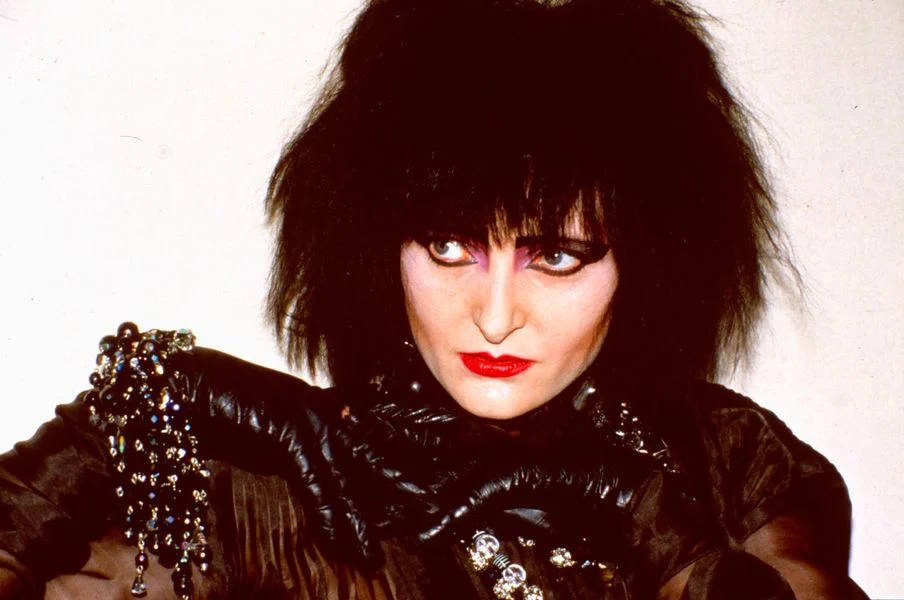
Born Susan Janet Ballion on May 27, 1957, in London, Siouxsie Sioux grew up in an environment marked by both familial challenges and cultural vibrancy. The youngest of three children, she experienced a tumultuous childhood, with her father’s alcoholism and mother’s struggles creating a complex family dynamic. These early experiences imbued her with a sense of resilience and independence that would later define her public persona.
Siouxsie’s musical journey began in earnest during the mid-1970s when she became immersed in the burgeoning punk scene in London. Inspired by the raw energy and rebellious spirit of the movement, she formed Siouxsie and the Banshees in 1976 alongside bassist Steven Severin. Their first performance at the 100 Club Punk Festival, with a hastily assembled lineup, marked the start of a career that would span decades and influence countless artists.
Key Influences
Siouxsie Sioux’s approach to music and style was shaped by a confluence of diverse influences:
- Glam Rock and David Bowie: David Bowie’s theatricality and fluid approach to gender and identity had a profound impact on Siouxsie. His ability to reinvent himself and challenge norms resonated deeply with her, inspiring her to push the boundaries of conventional femininity.
- The Punk Movement: The punk ethos of DIY culture, anti-establishment attitudes, and raw, unfiltered expression was a significant influence on Siouxsie. The Sex Pistols, with whom she shared the early punk scene, exemplified the rebellious spirit that she would come to embody in her own work.
- Avant-Garde Art and Cinema: Siouxsie drew inspiration from avant-garde artists and filmmakers, such as Salvador Dalí and Luis Buñuel. Their surreal and provocative works encouraged her to explore unconventional themes and aesthetics in her music and visual presentation.
- Personal Experiences: Her own struggles and observations of societal expectations played a critical role in shaping her artistic vision. Growing up as an outsider, she used her platform to challenge the status quo and advocate for individuality and self-expression.
- Literature and Gothic Fiction: Gothic literature, with its dark and mysterious themes, also influenced Siouxsie’s style and songwriting. Authors like Edgar Allan Poe and the Brontë sisters provided a rich source of inspiration for her lyrical content and visual imagery.
Through these influences, Siouxsie Sioux developed a unique and powerful presence that defied traditional femininity. Her early life and the cultural movements she immersed herself in became the foundation for a career that continuously pushed the boundaries of what it meant to be a woman in the music industry.
Breaking Traditional Femininity
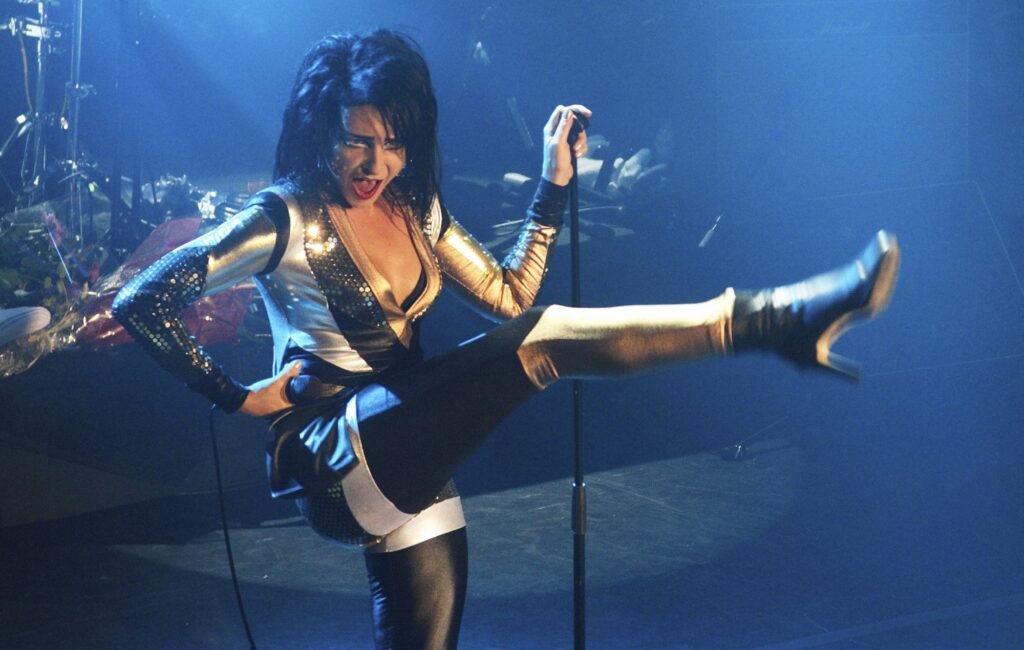
Before Siouxsie Sioux emerged on the scene, the music industry had well-defined, restrictive expectations for female artists. Femininity was often equated with softness, beauty, and adherence to conventional standards of attractiveness. Female performers were typically encouraged to present themselves in ways that emphasized their sexuality or innocence, fitting into neat categories that made them palatable to mainstream audiences. Icons like Marilyn Monroe and, later, pop stars of the early 1970s, were celebrated for their glamorous, highly polished images, which often reinforced traditional gender roles and societal expectations.
Women in rock and pop were usually expected to be the visual embodiment of a male fantasy—either as the demure, innocent girl-next-door or the overtly sexualized vixen. Their stage personas were crafted to appeal to a male-dominated industry and audience, with little room for expressions of strength, aggression, or ambiguity. This narrow definition of femininity left little space for female artists to explore identities that diverged from these norms.
Siouxsie’s Rebellion
Siouxsie Sioux shattered these conventions with a fierce, unapologetic presence that defied traditional notions of femininity. Her rebellion against these norms was multifaceted, encompassing her fashion choices, lyrical themes, and commanding stage presence.
Fashion Choices
Siouxsie’s fashion was a bold rejection of traditional feminine attire. Eschewing the glamorous, sexualized looks favored by many of her contemporaries, she embraced a style that was stark, dramatic, and often androgynous. She popularized dark, gothic makeup—heavy eyeliner, stark white foundation, and blood-red lipstick—that became her trademark look. Her clothing choices, often featuring leather, fishnets, and bondage-inspired accessories, conveyed a sense of power and defiance. This aesthetic was not designed to please or appease; it was a direct challenge to the male gaze and traditional beauty standards.
Lyrical Themes
In her lyrics, Siouxsie explored complex themes that were far removed from the love and heartbreak narratives common in mainstream music. Her songs often delved into darker, more ambiguous territories, addressing issues of identity, power, alienation, and societal critique. Tracks like “Spellbound,” “Cities in Dust,” and “Hong Kong Garden” showcased her ability to weave intricate stories and powerful imagery, often from a perspective that refused to conform to traditional female roles.
Stage Presence
On stage, Siouxsie exuded a magnetic, almost intimidating presence. Her performances were characterized by a raw, visceral energy that commanded attention and respect. Unlike the demure or overly sexualized performances expected of female artists, Siouxsie’s stagecraft was aggressive and confrontational. She moved with a confidence that defied the submissive, passive roles often ascribed to women in performance. Her commanding presence and unrestrained expression of emotions broke down the barriers of what was considered acceptable for female performers.
Visual and Musical Style
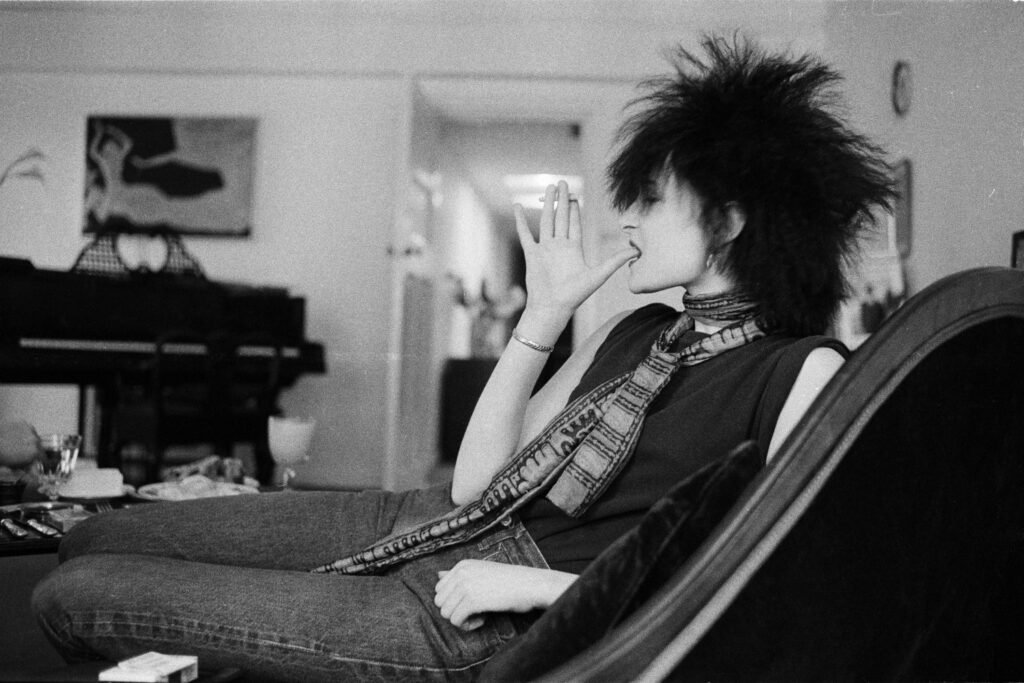
Siouxsie Sioux’s fashion choices were a radical departure from the conventional femininity of her time, blending gothic and punk influences to create a distinctive and iconic style. This aesthetic was characterized by a dark, dramatic, and often androgynous look that subverted traditional beauty standards and defied the expectations placed on female performers.
Gothic Influences
Siouxsie’s gothic influences were evident in her use of dark, heavy makeup and dramatic attire. She popularized a striking look that included stark white foundation, bold black eyeliner, and deep red or black lipstick. This makeup was not just a fashion statement but a form of self-expression that conveyed a sense of mystery and intensity. Her clothing often featured black lace, velvet, and leather, materials associated with gothic fashion that added to her enigmatic and powerful image.
Punk Influences
The punk movement’s DIY ethos and rebellious spirit also played a significant role in Siouxsie’s fashion. She embraced the punk aesthetic of ripped clothing, fishnet stockings, and bondage-inspired accessories. These elements were not only visually striking but also symbolized a rejection of mainstream fashion norms and a challenge to societal expectations. Her punk-inspired looks often included studded belts, leather jackets, and safety pins, creating a raw and edgy appearance that set her apart from more conventional female artists.
Defying Conventional Femininity
Siouxsie’s fashion choices defied conventional femininity by rejecting the soft, delicate, and sexualized looks that were typically expected of women in the music industry. Instead of conforming to the passive and decorative role often ascribed to female performers, she embraced a style that was assertive, intimidating, and unapologetically unique. Her fashion was a powerful statement of individuality and resistance, challenging the industry’s narrow definitions of beauty and femininity.
Stage Presence
Siouxsie Sioux’s stage presence was a key element of her artistry, characterized by a powerful and androgynous persona that captivated audiences and broke down gender barriers. Her performances were marked by a raw energy and commanding presence that set her apart from her contemporaries.
Powerful Presence: On stage, Siouxsie exuded a sense of confidence and control that was both captivating and intimidating. Her movements were deliberate and often aggressive, reflecting the intensity of her music and the defiance of her lyrics. Unlike the demure or overly sexualized performances expected of female artists, Siouxsie’s stagecraft was confrontational and empowering. She used her body language and facial expressions to convey a wide range of emotions, from anger and defiance to vulnerability and introspection.
Androgynous Persona: Siouxsie’s androgynous stage persona further challenged traditional gender roles. Her clothing and makeup often blurred the lines between male and female, creating a sense of ambiguity that was both intriguing and liberating. This androgyny allowed her to transcend the conventional limitations placed on female performers and to create a space where strength, aggression, and complexity were embraced.
Notable Performances and Tours: Several specific performances and tours highlighted Siouxsie’s powerful stage presence. The “Juju” tour in 1981, for example, showcased her at the height of her gothic influence, with elaborate costumes and a dark, theatrical stage setup that emphasized the themes of the album. Her performance at the “Nocturne” live album recording in 1983 captured the raw energy and intensity of her live shows, with Siouxsie’s powerful vocals and commanding presence taking center stage.
Another notable performance was at the Royal Albert Hall in 1983, where Siouxsie and the Banshees played a sold-out show that cemented their reputation as one of the most influential bands of the post-punk era. Siouxsie’s stage presence during this performance was a testament to her ability to captivate and engage audiences, with her magnetic energy and unique style leaving a lasting impression on all who witnessed it.
Lyrical Themes and Songwriting
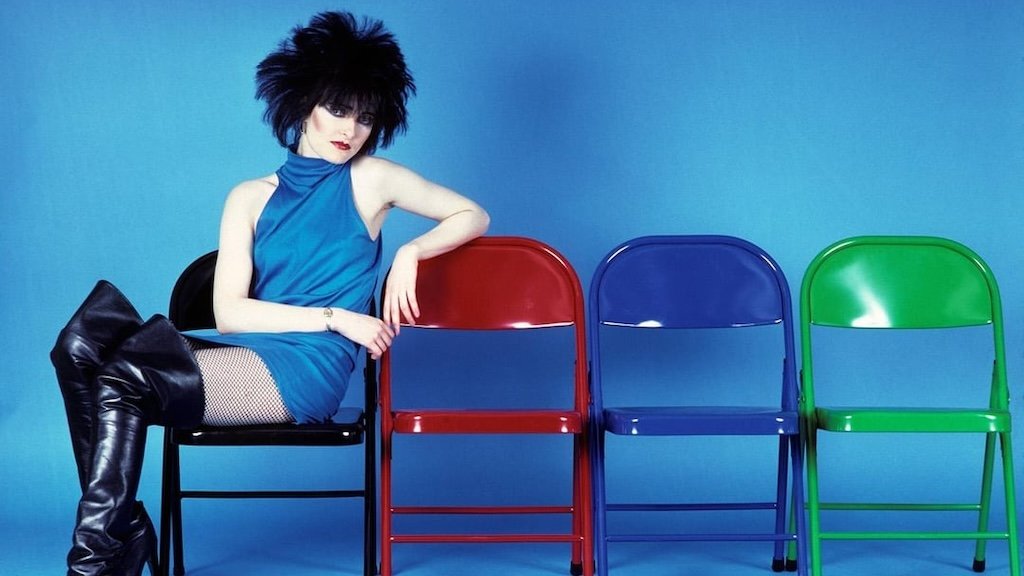
Siouxsie Sioux’s lyrics are renowned for their complexity and depth, often exploring themes of identity, power, and gender ambiguity. Her songwriting transcends simple narratives, delving into darker, more intricate territories that challenge listeners to think and feel beyond the surface.
Identity: Many of Siouxsie’s songs explore the fluidity and complexity of identity. Her lyrics often reflect a sense of self-discovery and transformation, rejecting static and simplistic notions of selfhood. For instance, in “Happy House,” she critiques the artificial and conformist nature of domestic life, implying a search for a more authentic and liberated self. This theme resonates throughout her work, portraying identity as something dynamic and multifaceted rather than fixed and predefined.
Power: Power dynamics, both personal and societal, are a recurring theme in Siouxsie’s lyrics. She frequently examines the interplay between dominance and submission, control and liberation. In “Cities in Dust,” for example, she uses the historical context of the destruction of Pompeii to comment on the transient nature of power and the inevitable downfall of tyrannical structures. Her lyrics often challenge authoritarianism and celebrate resistance, embodying the punk ethos of rebellion against oppressive systems.
Gender Ambiguity: Siouxsie’s exploration of gender ambiguity is one of her most groundbreaking contributions to music. She defies traditional gender roles and expectations, embracing androgyny and fluidity in both her lyrics and her public persona. In “Christine,” she delves into the fragmented identity of a person with multiple personality disorder, metaphorically addressing the multiplicity and ambiguity of gender. This exploration of gender fluidity was ahead of its time and remains influential in discussions about gender in contemporary music.
Impactful Songs
Several key songs in Siouxsie Sioux’s discography exemplify her challenge to traditional femininity and her exploration of complex themes.
“Spellbound”
“Spellbound,” from the album Juju, is a powerful anthem that captures the band’s signature sound and Siouxsie’s thematic depth. The song’s driving rhythm and haunting lyrics speak to the enchanting and sometimes perilous nature of the human psyche. Siouxsie’s portrayal of a mesmerizing force that defies control aligns with her challenge to conventional gender roles, presenting a vision of femininity that is potent and enigmatic.
“Christine”
In “Christine,” from the album Kaleidoscope, Siouxsie explores themes of mental fragmentation and identity. The lyrics describe the struggles of a woman with multiple personality disorder, using her story to comment on the broader societal pressures that fracture individual identity. This song challenges the traditional depiction of women as singular and simplistic, instead presenting a complex and multifaceted character.
“Cities in Dust”
“Cities in Dust,” from the album Tinderbox, uses the historical event of Pompeii’s destruction as a metaphor for the collapse of oppressive structures. The song’s vivid imagery and powerful vocals convey a sense of both devastation and liberation, reflecting Siouxsie’s critique of power and her celebration of resilience. This track exemplifies her ability to blend historical and contemporary themes, challenging listeners to consider the cyclical nature of power and resistance.
“Hong Kong Garden”
“Hong Kong Garden,” Siouxsie and the Banshees’ first major hit, addresses racism and cultural exploitation. The song’s energetic tempo and striking lyrics critique the treatment of Chinese immigrants in the UK, highlighting Siouxsie’s willingness to tackle social issues head-on. This bold stance not only defied the expectations of female artists but also positioned her as a voice of conscience in the music industry.
“Happy House”
“Happy House,” from the album Kaleidoscope, is a satirical take on the idealized notion of domestic bliss. The song’s upbeat tempo contrasts with its dark, cynical lyrics, which expose the facade of happiness often associated with traditional family roles. By questioning the validity of these societal norms, Siouxsie offers a critique of the restrictive and often oppressive nature of conventional femininity.
Cultural and Industry Impact
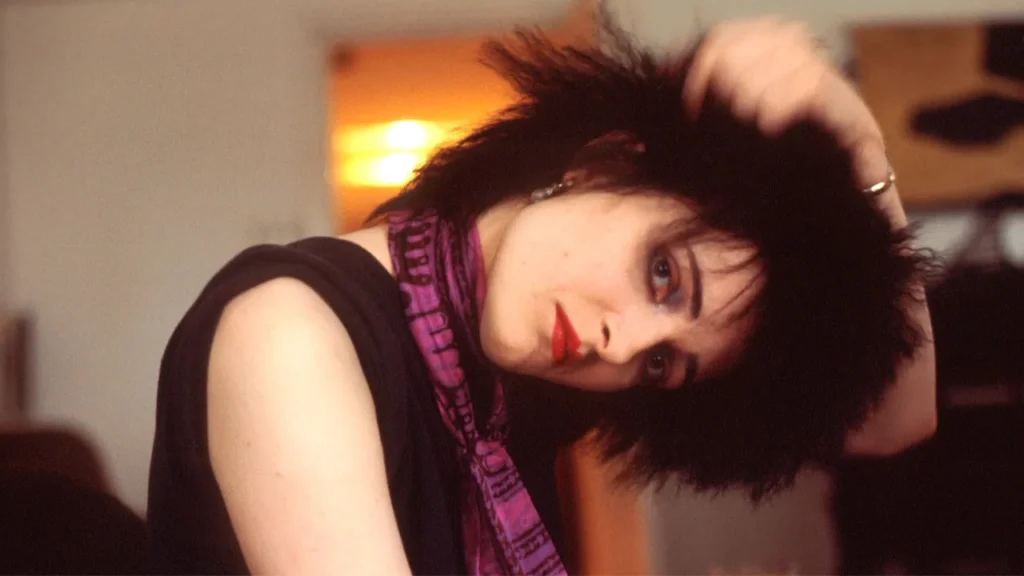
Siouxsie Sioux’s image and music had a profound impact on her fans, especially women and gender-nonconforming individuals who saw in her a reflection of their own desires for self-expression and defiance against societal norms. Her bold, gothic-punk style and powerful stage presence provided an alternative to the mainstream representations of femininity, inspiring a generation to embrace their individuality.
Women: For many women, Siouxsie represented a break from the conventional and often restrictive depictions of femininity in popular culture. Her refusal to conform to traditional gender roles and beauty standards resonated deeply with female fans who felt confined by societal expectations. Siouxsie’s assertive and androgynous persona offered a model of strength and independence, encouraging women to explore their own identities and express themselves more freely. Her influence extended beyond fashion and music, fostering a sense of empowerment and confidence among her female audience.
Gender-Nonconforming Individuals: Siouxsie’s exploration of gender ambiguity and fluidity had a particularly significant impact on gender-nonconforming individuals. Her androgynous appearance and refusal to be pigeonholed into binary gender norms provided a powerful example of how one could navigate and challenge traditional concepts of gender. Fans who felt marginalized or misunderstood found in Siouxsie a kindred spirit, someone who validated their experiences and encouraged them to embrace their true selves without fear of judgment. Her music and image became a sanctuary for those seeking acceptance and representation.
Legacy in Music
Siouxsie Sioux’s influence on the music industry is both far-reaching and enduring. Her pioneering approach to style and substance has left an indelible mark on numerous artists and genres, contributing to the evolution of music and popular culture.
Influence on Subsequent Artists
Siouxsie’s impact is evident in the work of many artists who followed in her footsteps, across a variety of genres. Iconic musicians such as PJ Harvey, Björk, and Shirley Manson of Garbage have cited her as a key influence, praising her originality and fearless approach to artistry. Her blend of punk’s raw energy with gothic’s dark aesthetics paved the way for these artists to explore their own unique sounds and personas.
In the realm of alternative and goth rock, bands like The Cure, Joy Division, and later acts like The Smashing Pumpkins and Marilyn Manson drew inspiration from Siouxsie and the Banshees’ innovative soundscapes and visual style. Her influence is also evident in contemporary pop and indie music, with artists such as Florence Welch of Florence + The Machine and St. Vincent acknowledging her impact on their work.
Broader Music Industry
Beyond individual artists, Siouxsie’s legacy in the broader music industry is significant. She helped to carve out space for women in rock and alternative music, demonstrating that female musicians could be as powerful, innovative, and influential as their male counterparts. Her success challenged industry norms and opened doors for future generations of female and gender-nonconforming artists.
Siouxsie’s contributions also extended to the visual and performative aspects of music. Her theatrical and avant-garde stage shows set new standards for live performances, influencing how artists approached concert production and visual storytelling. This legacy can be seen in the elaborate stage designs and immersive experiences created by contemporary performers like Lady Gaga and Billie Eilish.
Moreover, Siouxsie’s fearless exploration of dark and complex themes expanded the lyrical possibilities within popular music, encouraging songwriters to tackle subjects that were previously considered taboo or too challenging for mainstream audiences. This shift has allowed for a richer and more diverse musical landscape, where artists feel freer to explore and express a wide range of emotions and ideas.
